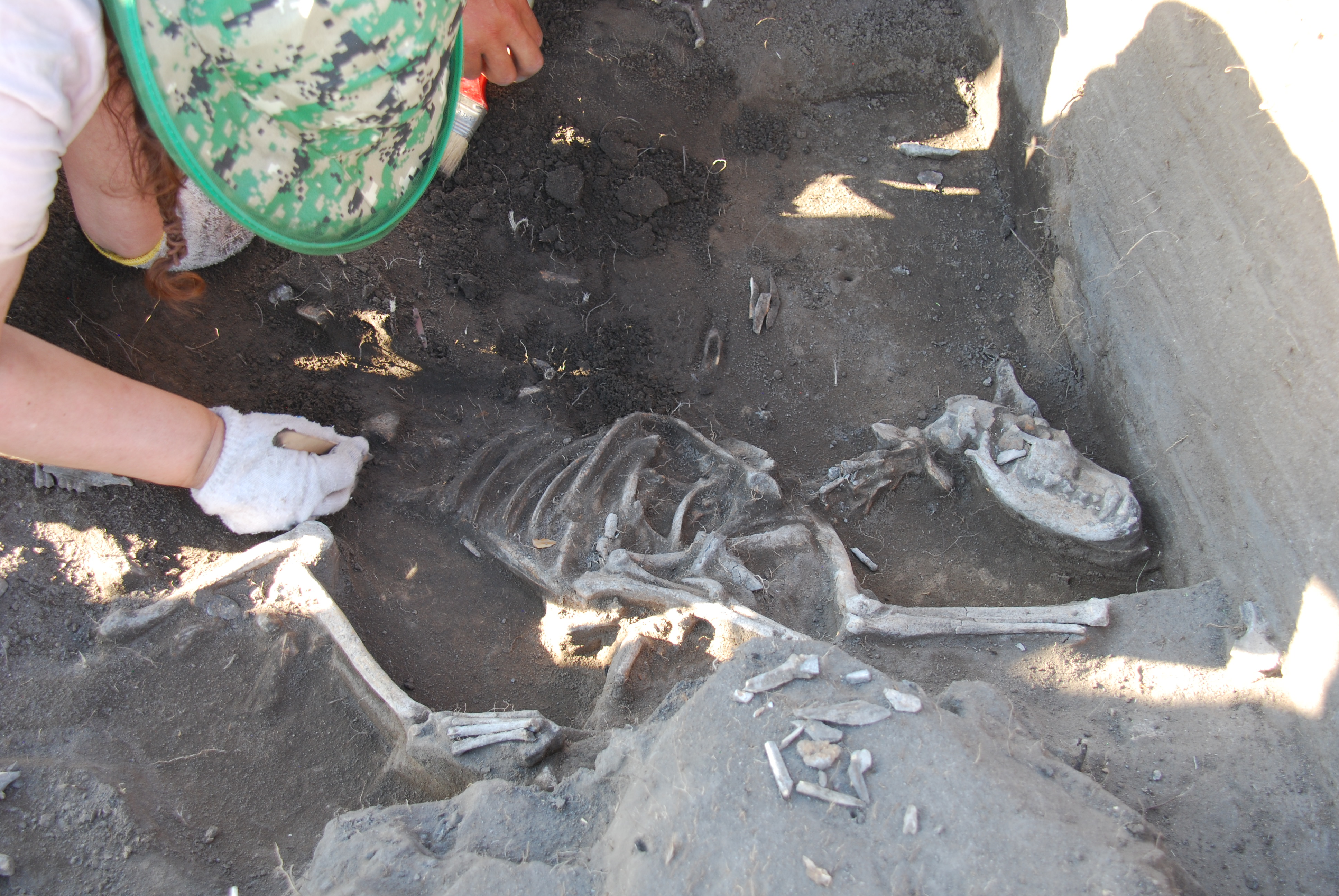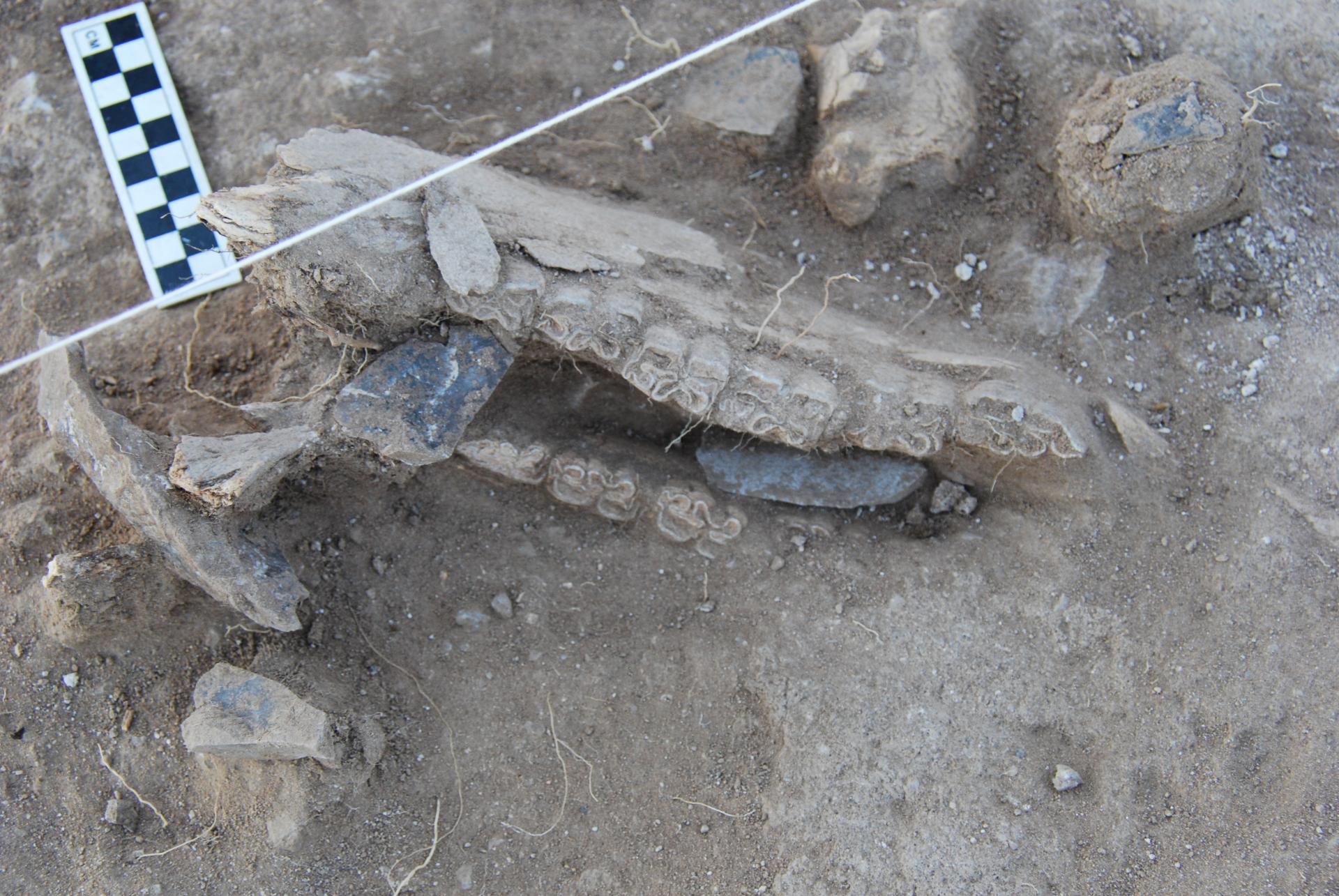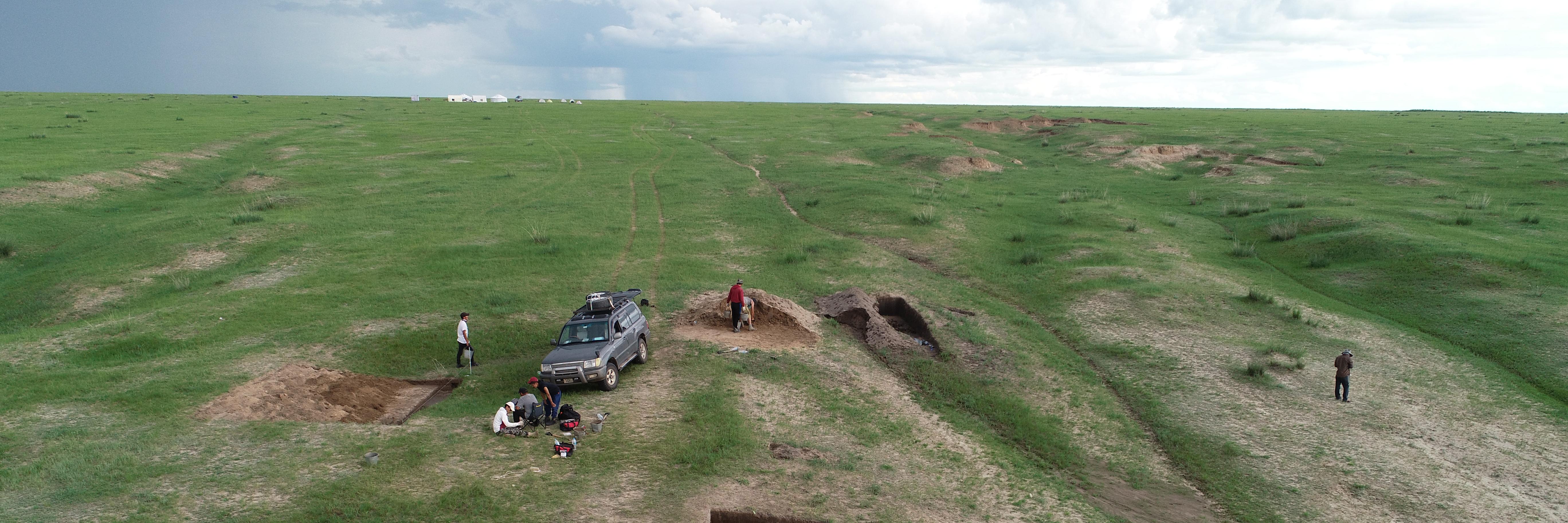The complete skeleton of a dog preserved under the floor of a home.
A horse jaw, with a stone blade placed purposefully in place of a tongue.
A deposit of extinct megafauna bones, including an elk leg, a hyena skull, and wooly rhino shoulder blade placed in the earth together, one on top of the other.

These are just some of the animal remains discovered by UTSC Anthropology Professor Lisa Janz’s Mongolian-Canadian research team during the course of their work on the Gobi-Steppe Neolithic Project, an archeological project that has been surveying and excavating Palaeolithic, Neolithic, and Bronze Age archaeological sites in eastern Mongolia since 2013. It was in the most recent excavations this summer, at a site near Tamsagbulag, that Janz discovered the remains of the dog, laid out as if it were sleeping, buried in the dirt floor close to the hearth of a Neolithic home that was being excavated.
“It’s clear that particular animal had value above other animals,” says Prof. Janz, “because we find other dogs who did not receive the same treatment.” She adds that the skeleton was surrounded by rabbit bones, although it is difficult to tell whether they were placed there deliberately or left as refuse. The dog was likely prized for its use in hunting.
“People are fascinated by the relationships humans have with animals, because there’s an intimacy there and a lot of people can imagine the relationships are the same as we have with our own pets,” says Prof. Janz. “Since cultures change so much over time and space, it would be a mistake to assume these people thought about animals in exactly the same way we do, but it is undeniable that humans have long maintained special relationships with other species whether tame or wild.”
The settlement at Tamsagbulag was occupied 8,500-7,200 years ago. This was a community focused on hunting large game for several hundred years, with the help of dogs like the one found by Prof. Janz’s team. However, the site is unique because it has some of the first evidence of long-term occupation by sedentary communities, as well as some of the earliest evidence of textile production.

The team of the Gobi-Steppe Project has been studying the site since 2018. One key question regards the aurochs: a species of gigantic prehistoric cattle that were abundant in the area at the time. Could the community at Tamsagbulag be managing the aurochs, or even have domesticated them? The team includes geneticists who are tracing ancient DNA, examining cattle lineages, and looking for the bottlenecks that would imply inbreeding, as well as geoarchaeologists who are looking in the soil for evidence of cattle around houses.
“They were enormous, I have a heel bone from a Bactrian Camel, and the same bone from one of these aurochs was a bit bigger,” says Prof. Janz. “We’re looking at whether the site is related to intensive aurochs hunting, is a sort of ranch, or whether people have a few individual cattle domesticated, which they use to attract the wild herds – similar to how northern groups have used domesticated reindeer. All of these methods show a form of landscape management, showing people engaging in resource management without any form of or movement towards agriculture.”
